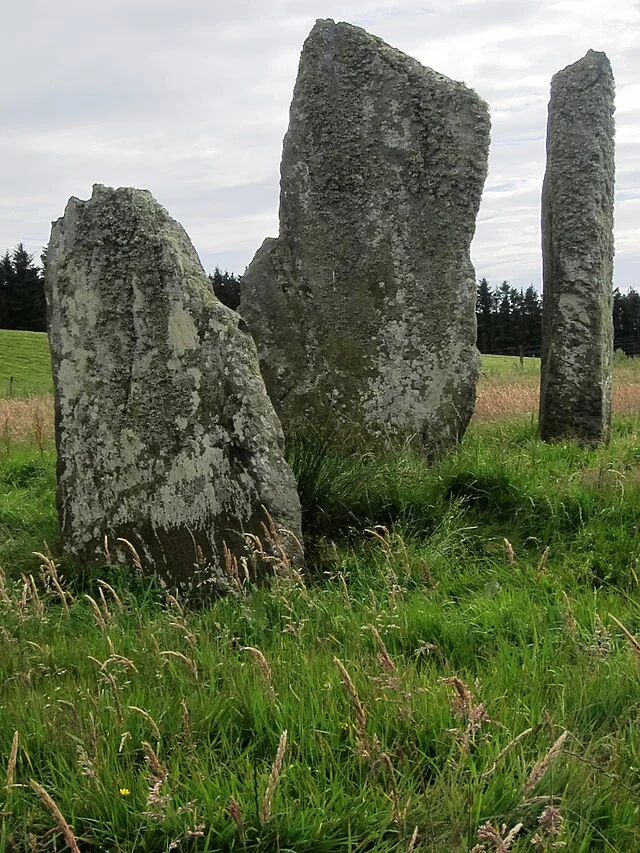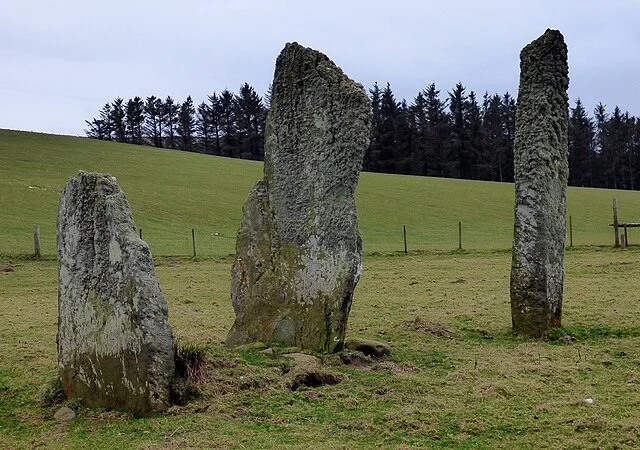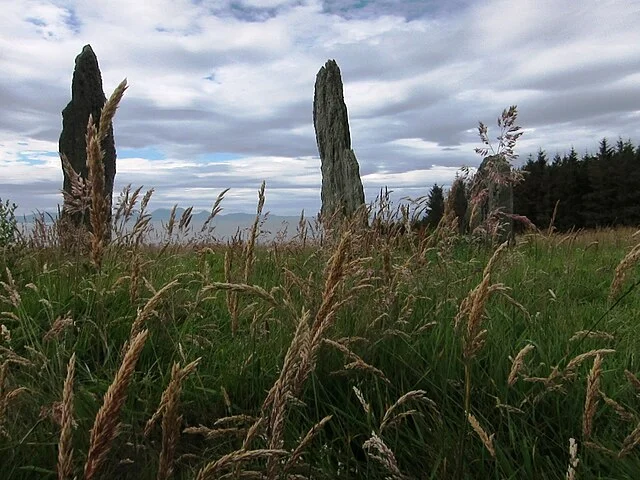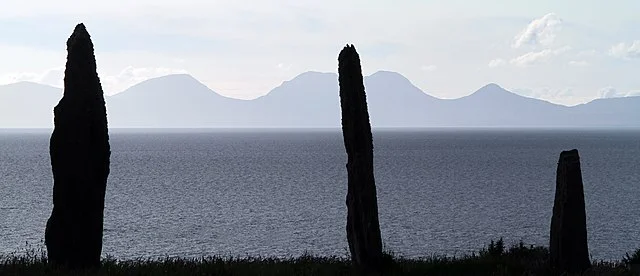Ballochroy is an important prehistoric site located on the Kintyre Peninsula in Scotland. It consists of three standing stones aligned in a triangular formation, dating back to the Bronze Age (around 2000 BC). This alignment suggests that the site was used for astronomical purposes, with the stones positioned to mark solar or lunar events such as solstices or equinoxes.
Get your dose of History via Email
Historical Significance

The Ballochroy standing stones are significant because of their connection to ancient astronomical practices. Researchers believe that prehistoric communities used these stones to track the movements of the sun, moon, and stars. The alignment of the stones toward the prominent peaks of Jura, a neighboring island, further supports this theory.
Additionally, the site’s proximity to other prehistoric monuments on the Kintyre Peninsula suggests that it was part of a larger network of ritual sites. These may have been used by local communities to monitor agricultural cycles and conduct religious ceremonies.
Structure of the Stones

The three stones at Ballochroy are large, upright slabs of local schist. The tallest stone stands about 4.2 meters (14 feet) high, while the others are slightly smaller. Their placement in a triangular shape makes the site unique among other standing stone formations in Scotland.
One of the most interesting features of Ballochroy is the precise alignment of the stones with the nearby mountains. Researchers have found that, on the summer solstice, the sun sets directly over a distant peak when viewed from the standing stones. This level of accuracy shows the advanced understanding of astronomy that Bronze Age people in Scotland possessed.
Archaeological Research

Ballochroy has been the focus of archaeological study since the early 20th century. Scholars have analyzed the site’s astronomical alignments, as well as its relationship with other prehistoric monuments. Despite extensive research, some aspects of Ballochroy’s function remain unclear. For example, it is still unknown whether the site had additional uses beyond astronomical observation.
However, archaeological evidence from the surrounding area suggests that Ballochroy was part of a larger cultural landscape. Researchers have discovered burial cairns, settlement remains, and other standing stones nearby, indicating that the region was an important center of Bronze Age activity.
Preservation and Access
Ballochroy is a scheduled monument under the care of Historic Environment Scotland. This designation protects the site from development or damage. Visitors can access the site, although it is located on private land, so access is subject to local permissions.
The site’s remote location makes it a quiet and less-visited destination, which has helped preserve its integrity. Nonetheless, erosion and weathering continue to pose a challenge to its long-term preservation.
Conclusion
Ballochroy is a key site for understanding prehistoric astronomy and ritual practices in Bronze Age Scotland. Its carefully aligned standing stones offer insight into the advanced knowledge of the natural world held by ancient people. Continued research and preservation efforts are essential for safeguarding the site for future generations.
Source:

